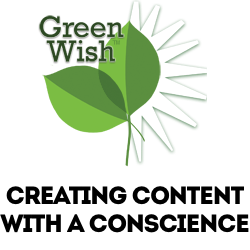With the current lack of rain in California and resulting drought conditions state wide, we welcome this guest post about how to save water in your own home.
 Water is a precious essential that many of us have taken for granted.
Water is a precious essential that many of us have taken for granted.
· We leave the water running while brushing our teeth
· We excessively wash dishes and clothes
· We strive for the perfect lawn and let the sprinklers flow
Water is used in all facets of human life, whether it’s for agriculture to provide the food we eat or producing electricity to power our towns and cities.
On a macro level, it’s easy to blame water waste on companies and their bad practices, but it’s important that we look in the mirror and examine our habits, too.
The following is a hodge-podge of ideas related to saving water, which is composed of tried, tested, and (somewhat) unconventional methods.
1. Drive Less
Climate change makes a big impact on our water supply, but we can’t just blame the companies that are trying to avoid the carbon tax. We are also at fault due to our car culture. Though options are available for cleaner transportation (electric vehicles, public transit, walking, or cycling), humans seem steadfast on driving. However, by making a shift to one of these alternatives we would be one less person on the road putting pollutants into the air – thus contributing to climate change.
Suggestion: Seek alternative options for your commute. Start a car pool with coworkers, ride the bus, or even consider moving closer so you’re within walking distance. You’ll help your health (and the health of our Earth).
2. Evaluate the Home
Let’s do some simple math.
There is an estimated 317 million people in the United States (and growing) and of that about 114 million households as of 2010. If each household were to conserve just one additional gallon of water each day, we would be looking at nearly 41 billion gallons of water saved each year.
These numbers are astounding but even more astounding is how easily it can be done:
· Switching appliances to those that are Energy Star certified
· Reducing the amount of time spent in the shower by a minute
· Using vegetation that is natural to the geographical location
Suggestion: Evaluate your home and discover where there is water waste. Make the investment in water saving products for your home – and encourage friends, family, and neighbors to follow suit.
3. Don’t Encourage the Water Industry
It’s preaching to the choir here, but consumers shouldn’t encourage the practice of bottled water. People can vote with their wallets and if they were to step up and say no to the bottled water industry we could move forward in saving the environment.
Laws in place by the EPA give us an abundance of clean water. The marketing campaigns of these big businesses have lead consumers to believe that bottled water is cleaner because there are relaxed regulations for these companies.
Let’s also not forget:
· The amount of oil needed to make the plastic and transport the goods
· The low percentage of bottles being recycled and ending up in landfills
· The contaminants (like hormones) in the water or BPA in the plastic
Suggestion: Love tap water. Reuse a bottle if you have one or purchase a tumbler/thermos if you really need to carry water around at all times. As before – encourage others and get vocal about your opposition to the industry.
Every Drop Counts
Our water supply isn’t infinite and it certainly doesn’t help that we’re wasting it, polluting it, and systematically changing the climate. With a few lifestyle changes (and small investments), we all can take small steps to alleviate the damage already done and get on the right path.
There has never been a better time for this Greek proverb: “A society grows great when old men plant trees whose shade they know they shall never sit in.” We owe it to the world (and the next generation) to have clean water.
– Christina Moore
Photo credit: Flickr user fox_kiyo
